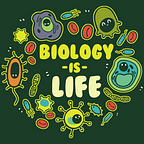Steven Rindner Bio: Learn All About Plant Pigments
Steven Rindner Bio: An In-Depth Look at Plant Pigments
The pigments in plants give nature its distinct color. According to Steven Rindner, bio student and New Yorker, the reason green is not the color of leaves, but its dominant color as well is because of the presence of chlorophyll. That said, other types of pigments give nature its colorful diversity. Steven Rindner shares the different kinds of pigments and their other useful properties with everyone today.
First, you have chlorophyll.
As bio student Steven Rindner mentioned earlier, chlorophyll is mainly responsible for nature’s green color explains why it is the primary pigment. Photosynthesis depends highly on chlorophyll’s reaction to the sun’s continuous supply of light energy.
Chlorophyll has different types which can be found in various kinds of living organisms: Chlorophyll A (algae, cyanobacteria, and in higher plants), Chlorophyll B (green algae and in higher plants), Chlorophyll C (in photosynthetic Chromista, marine algae), Chlorophyll D (in red algae), Chlorophyll E (only in algae).
Next up are carotenoids.
These pigments give certain fruits, such as carrots, papaya, mangoes, tomatoes, etc. Their yellowish and red-orange color, says Steven Rindner. Carotenoids are produced through biosynthesis in plants, fungi, algae, and photosynthetic bacteria. In human and animal cells, carotenoids are made only from diets.
Then, you have anthocyanins.
These water-soluble pigments belong to the flavonoid group, says bio major Steven Rindner. Anthocyanins give grapes, strawberries, raspberries, and even flowers their brilliant reddish and purple color. The benefits of anthocyanins include anticancer properties and anti-inflammatory, anti-microbial, and antioxidants.
Lastly, Steven Rindner, a bio student, mentions flavonoids.
Yellow is the color of this type of pigment in oranges, grapefruits, lemons, and even on some flowers.
Flavonoids generally reside in plastids and cytoplasms of a plant cell. Flavonoids have antioxidant properties and help manage or lower cholesterol, adds Steven Rindner.
